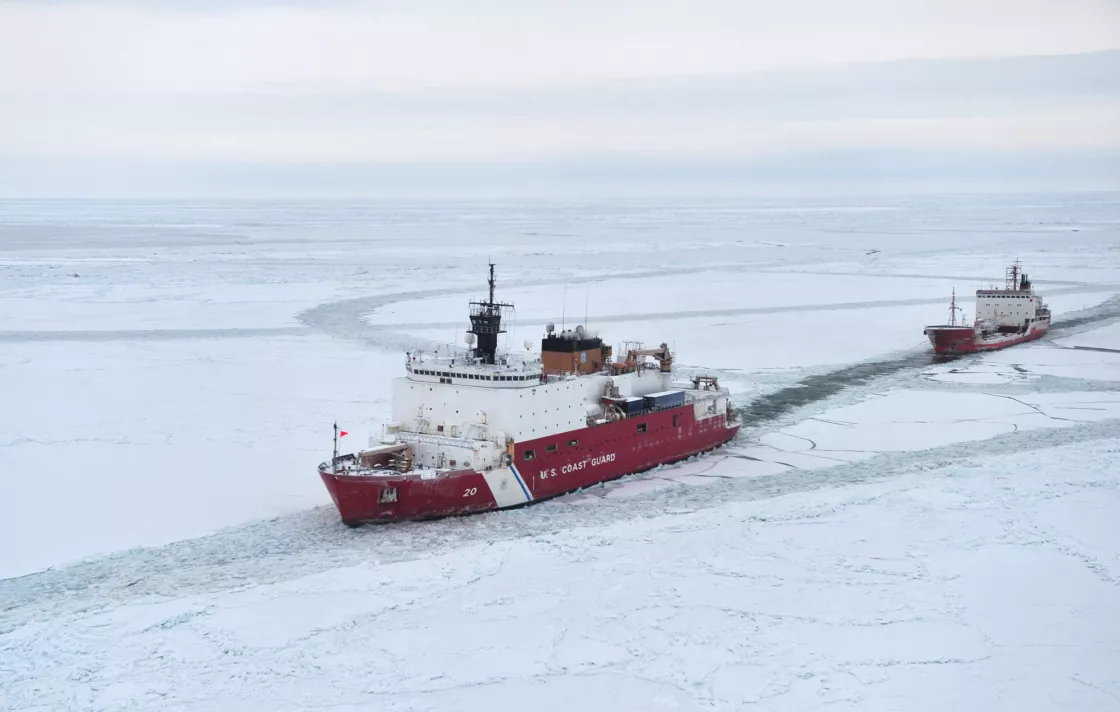As the Arctic Ocean becomes increasingly ice-free, many countries are eager to tap into previously inaccessible northern resources. Energy companies seek drilling permits for oil and natural gas, and shipping companies hope to ply newly opened sea routes. Given the unpredictable nature of Arctic sea ice, some wonder if operating in the already inhospitable north will be an economically viable effort. Others believe that even if drilling or shipping is not currently viable, the Arctic is changing fast enough that industry in the Arctic is here to stay.
A question of drilling
Timing of drilling in the Arctic is perhaps the largest challenge facing oil companies today. Summertime sea ice has been dwindling since scientists began taking measurements in the late 1970s, but it is still unpredictable. Walt Meier, research scientist at NSIDC said, “Sea ice coverage varies greatly from one year to the next and from one regional location to the next. So, one summer may find thick impenetrable ice in a specific region—when the summer before, large areas were completely accessible." For example, Royal Dutch Shell was only able to drill for a single day in September before sea ice floes forced them to stop, in spite of the fact that overall, Arctic sea ice extent has melted to record low levels. Although September 24 marked the annual moratorium on exploratory drilling in the Arctic, Royal Dutch Shell has until October 31 to build related drilling infrastructure, as long as none of that activity penetrates the oil layers.
Floating through floes
Not all of the Arctic’s resources require drilling or extraction. Declining sea ice may turn the Arctic Ocean itself into a resource, opening new trade routes and shortening travel times between key destinations. The Northern Sea Route, which hugs the coasts of Russia and northern Europe, has been used by Russian ships for decades, often with the assistance of icebreakers.
The route first opened to international shipping in 2005. Although it has not remained consistently ice-free, the ice tends to be thinner first-year ice, making it easier for icebreakers to carve out a channel. This route between East Asia and Europe is 40 percent shorter than traveling across the Indian Ocean and through Egypt’s Suez Canal. An Arctic route may also be safer, as the Suez route is often threatened by pirates. Shipping companies are also eyeing the Northwest Passage. This route connects the Atlantic and Pacific Oceans by winding ships through the islands of the Canadian Arctic Archipelago and along the northern coast of Alaska, cutting thousands of miles off of current trade lanes that veer south to cross at the Panama Canal. This route is less predictable, however, as portions may remain blocked by thick ice floes drifting in from the central Arctic. A “cross pole” route that would cut straight across the Arctic Ocean may be the best option. If sea ice continues to decrease, this path may become consistently ice-free enough to permit regular summertime shipping.
A question of value
Although extensive drilling and shipping are not yet permanent features of the Arctic, companies are planning for the opportunity. The benefits of operating in the Arctic could be many, including new reserves to boost dwindling oil supplies and newly accessible shipping lanes to add to world trade. The drawbacks are also noteworthy. Even under the warmest predicted scenarios, the Arctic will be ice-free for a few weeks each summer, meaning companies will have very limited time to ship cargo or explore the seabed for resources. And once established in the Arctic, companies must invest in costly special equipment to withstand the harsh environment. In addition, more shipping and drilling may result in spills and other damages to a fragile and already stressed ecosystem. More industrial activity adds a new source of the very carbon dioxide that is warming our planet. And increased activity may bring irreversible changes for the people, plants, and animals that also rely on the Arctic’s natural resources for survival.


